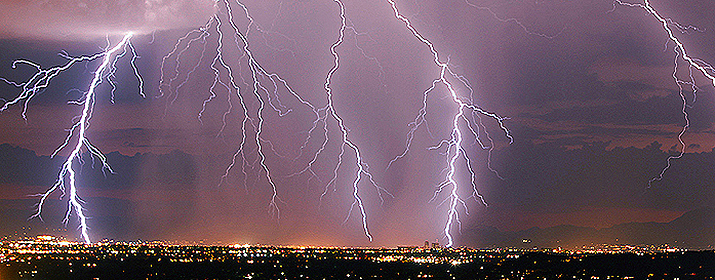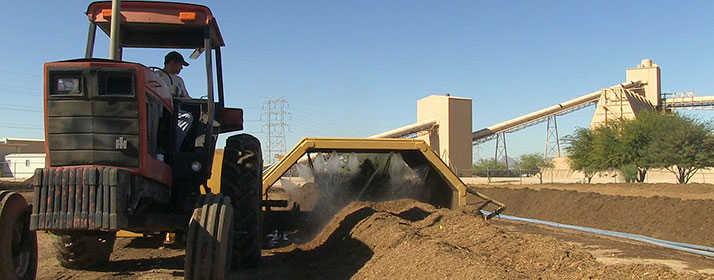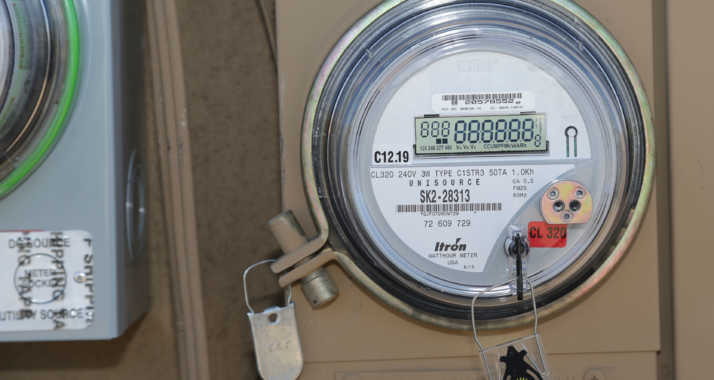

When a summer monsoon storm’s high winds and heavy rains cause power outages, Tucson Electric Power’s mobile-friendly Outage Map provides real-time information such as the number of customers affected and the estimated time of restoration.
Using the Outage Map, as well as social media such as Twitter, TEP can disseminate outage information quicker and more extensively than ever before, keeping customers up-to-date on restoration efforts.
TEP relies on reports from customers to identify outages and assess damage. Customer reports are crucial to accurately estimating outage duration and restoring power as quickly as possible.
TEP’s system control center is notified of outages by customer calls, emergency reports and electric system monitoring equipment. A TEP troubleman will respond to a reported outage to make an initial assessment of the damage. Information verified by the system control office is posted on the Outage Map, which automatically updates every five minutes.
Customers who see downed power lines should stay away and call 911 immediately. Along with outages, customers should report damage to power poles and other equipment as soon as possible to Customer Care at 520-623-7711.
The first priority for TEP workers is to safely secure damaged areas.
“It’s not always as simple as putting wires back up,” said Thomas Mills, TEP’s Manager of Transmission & Distribution Control. “We want to restore power quickly, but we also must repair any damage that’s creating an unsafe situation for the public and for our employees. Restoration has to happen in the safest manner possible.”
If storm damage is widespread, repair crews prioritize their work by addressing public safety issues first.
TEP prepares year-round for storm season by testing and upgrading equipment, securing additional supplies and placing extra crews on call.
Customers should plan ahead and be prepared for summer storm season.
The best way to avoid lightning, flash floods and other dangerous conditions is to not be in danger in the first place. Stay up to date on current weather forecasts — especially notifications issued for severe weather — through TV or radio news, the Internet or NOAA weather radio. During storm season, scan the skies overhead before leaving a safe location.
If a power line comes into contact with your vehicle, stay inside the vehicle until help arrives — do not attempt to get out. By stepping out of the vehicle, your body can become the pathway for electricity to reach the ground, causing severe bodily harm or electrocution. Use a cell phone, if available, to notify emergency services of your exact location.
At home, also use a cell phone. Never use a landline phone if you see lightning or hear thunder in your area, as phone lines can be a conduit for nearby lightning strikes.
Turn off — but don’t unplug — electronic appliances that were on when the service interruption began. Leave one light on to indicate when power is restored. Never touch wiring during a thunderstorm.
Don’t play video games connected to your TV. Lightning can travel through wires from game consoles to handset controllers.
Keep refrigerator and freezer doors closed. The refrigerator will keep food safely cold for about four hours if it is unopened. As a general rule, perishable foods with temperatures above 40 degrees for more than two hours should be thrown away.
Prepare in advance by gathering basic supplies such as food, water and sturdy clothing into a disaster supply kit. The rule of thumb is to keep enough supplies in your home to meet your needs for at least three days.
“We work with the City of Tucson, Pima County, police and fire officials and the National Weather Service to get word out about staying safe in the storm,” Mills said.
Visit monsoonsafety.org to learn more about summer monsoons in the Southwest.






